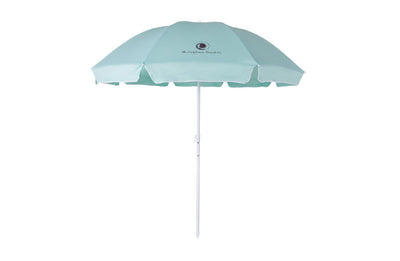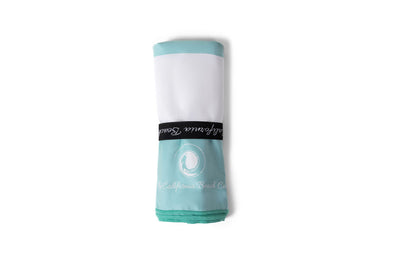Just because summer is starting to fade doesn’t mean that we have to lose out on beach time. Head to the beach in the morning for a brief swim, come on a sunny day for some lounging, or just visit for some time with the waves. Either way, you can enjoy the beach throughout the beginning of fall too.
You know who else would love this extra time outdoors? Your dog! They love that time in nature, and if they’re not afraid of the water, then they’ll definitely enjoy that time in the waves. However, whether you’re lounging in the sun with them or out on the paddle board, you need to make sure that you’re keeping them safe. Read below to learn more about how to keep your pet safe at the beach. From protecting them from the sun to being cautious about what goes into their mouth, these are tips you need!
Bring Along Sun Protection
You don’t like spending too much time under direct sunlight. When you’ve had enough, you leave or you find shade. Our pets don’t have that same luxury, so make sure to bring along some shade with you. A pop-up playpen for dogs will make a huge difference, blocking the sun and providing some much-needed shade whenever your dog needs it. It also provides them a space to laze about while you get your tan on.
In addition, make sure to bring along some puppy sunscreen and other items to protect your pet from the sun.
Be Cautious of Waste
While some beaches are clean, others, not so much. Pay attention to the waste you notice around the beach. Don’t let them get into the fellow beachgoers’ food, don’t let them jet off down the beach when you don’t know what food they may get into. It may seem extra cautious, but this concern is important, especially when they try to get after animal bones, dumped hooks, and other nasty scraps.
Keep Your Pup from Drinking Lake/Ocean Water
One of the most important tips on how to keep your pet safe at the beach has to do with bringing your own water along. Don’t let your dog drink the water from the lake, river, or ocean—especially the ocean. It gives you an upset stomach to swallow too much salt water, and it’s the same way for you dog. Consuming too much salt like that can cause some uncomfortable issues.
Make sure to bring your own water and bowl along. Also, make sure to watch out for them while they’re swimming. A wagging tongue means an open mouth, which can cause some damage while swimming and drinking too much of that water. Just keep an eye out!
Don’t Force Swimming
Speaking of swimming, don’t force it. Not every pup is meant to be a swimmer, and that’s okay. Some dogs are afraid of the water, and some may not want to head into a large body of water. Try to understand your dog’s psyche—if their body language changes as they near the water, don’t force it. If they don’t like to walk in the deep sand—don’t force them. If your pet just wants to sit in their playpen, let them. They can still enjoy the calm of the outdoors without having to hop into the water.
Featured Products
Put a Time Limit on Swimming
However, if your pet does like swimming, you still need to be cautious about how long you let them swim for. Dogs might not realize when they get too tired to swim. Ocean waves are difficult, even for trained dogs. Ensure that after a tough swim you give your dog the space to unwind and relax. Not to mention, too much swimming can mean a few days of no tail wagging—often called swimmer’s tail or limber tail. It results from overuse of the tail, causing a strain.
This is just one of the reasons why you should put a time limit on swimming. Try not to encourage diving or swimming long distances to receive a toy. Again, be cautious with your pup and understand their needs.
Watch Your Pup’s Paws
People have said for years that we need to be cautious about hot sidewalks when walking our furry friends, and the same goes for the beach. If the hot sand doesn’t feel well on your feet, then there’s no chance of it feeling good on your dog’s paws. Though most pups don’t like the idea of dog booties, they are often just the solution for hot sand. In addition, you could keep some paw balms on hand and apply those as needed.
You’ll also want to watch out for any sharp objects. Check their paws and between their toes for any cuts and scrapes.
Understand the Necessity of Life Vests
You may not think it’s necessary to wear a life vest while you go paddle boarding, but that doesn’t mean your dog doesn’t need one. Even if you’re not paddle boarding and simply paddling around in the water, a life vest is essential for your pet. Especially if you’re in the ocean, life vests are even more important—it’ll keep them afloat in what could be a very scary situation.
Not to mention, it’ll help you worry less while your dog is out playing in the water. We talked about how dogs don’t necessarily know when they’re tired or how to handle crazy tides. Life vests are life savers—even for our pets!
Take Some Breaks
Our last tip is simply about taking breaks from the sun and the beach. Chances are, your summer was already full of quite a few beach days—you don’t need to force them for you or your pet if the excitement isn’t there. And if the excitement is there, you should still make sure to take breaks. Too much sun, too much water, and too much swimming is a lot for anyone, and that’s especially the case with your dog.
We hope you found this guide to keeping your pet safe at the beach helpful. Remember, anytime you’re looking for a sun protector for your dog, cat, pet, child, or even yourself—turn to the California Beach Company. We strive to provide a place of comfort for anyone who may need it. Better yet, we make sure it’s comfortable, safe, and easy to use. Shop our collections now and keep this on hand for your next adventure!














